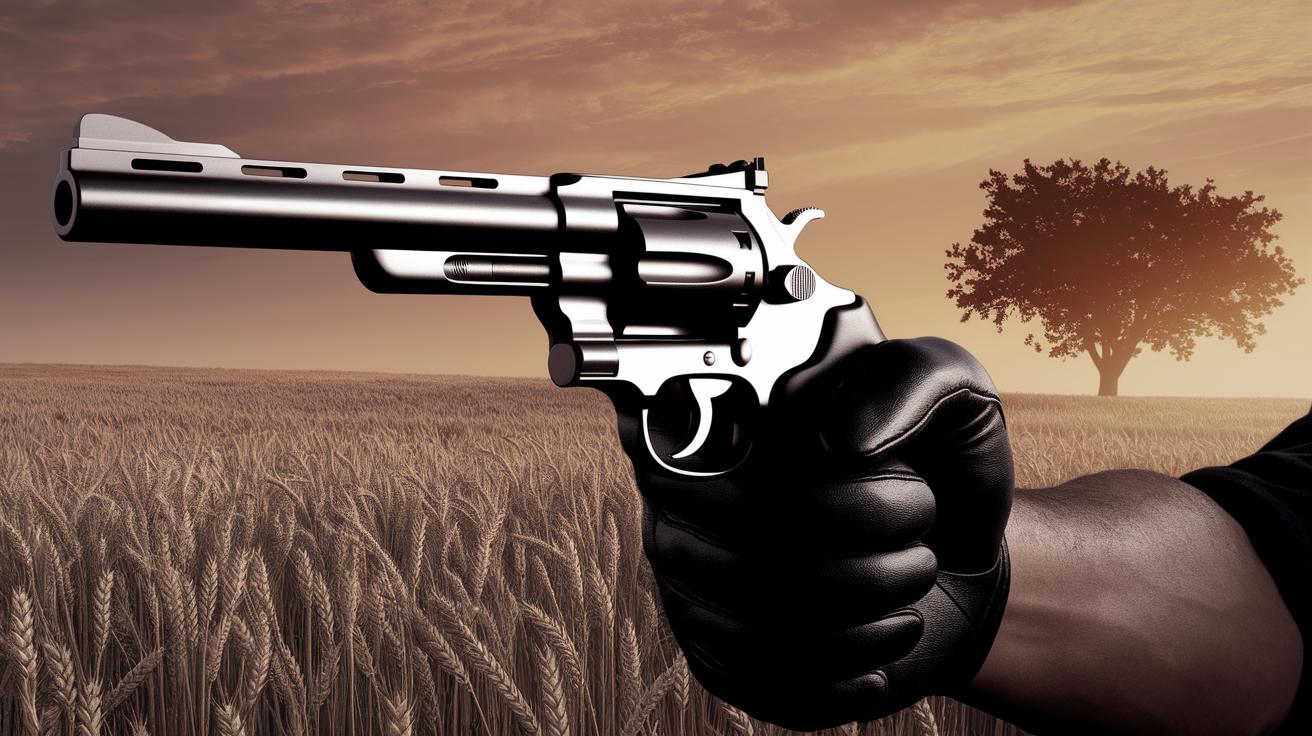Shooting a Pistol: Mastering the Art of Proper Handgun Handling
Shooting a pistol is not only a skill but also an art that requires practice, patience, and precision. For beginners and seasoned shooters alike, understanding the intricacies of gripping and firing a handgun effectively is paramount. In this comprehensive guide, we delve into the essential techniques needed to perfect your pistol shooting, considering key elements such as grip, breathing, and trigger control. Through a step-by-step approach, you’ll learn how to enhance accuracy and ensure safety, ultimately boosting your confidence during every shooting session. Whether you’re a novice eager to learn or an experienced marksman looking to refine your skills, this guide offers valuable insights that cater to all levels of expertise.
Use Two-handed Grip
The foundation of accurate pistol shooting begins with a solid two-handed grip. This method provides greater stability and control, enabling the shooter to manage recoil effectively and maintain focus on the target. By distributing the weight and force of the recoil across both hands, shooters can achieve a smoother firing experience and minimize muzzle rise.
When employing a two-handed grip, the dominant hand wraps around the pistol’s grip, with the index finger indexed above the trigger guard. The non-dominant hand then envelops the dominant hand, applying consistent pressure while keeping the thumbs aligned. This position ensures that the firearm remains stable, allowing for quick follow-up shots and improved accuracy.
Find the Right Grip Strength
Determining the appropriate grip strength is crucial to ensuring control without inducing fatigue. A grip that is too firm may cause tension in the hands and arms, leading to decreased accuracy, while a grip that is too light can compromise stability and control over the firearm.
The ideal grip strength achieves a balance, firm enough to hold the pistol securely without trembling, yet relaxed enough to avoid stiffness. Shooters often find it helpful to practice dry firing exercises to identify and maintain the optimal grip strength, refining muscle memory and improving dexterity in handling the weapon.
Place One Hand Under the Other
Properly positioning one hand under the other is fundamental to mastering the two-handed grip. The non-dominant hand, serving as a supportive base, cradles the dominant hand while ensuring the thumbs remain aligned for consistency and control.
This hand placement allows for uniform pressure distribution, enhancing stability during the firing cycle. Maintaining this alignment throughout the shooting session creates a natural synergy, which is instrumental in managing recoil and preserving shot consistency. Through repetitive practice, this positioning becomes instinctive, greatly improving shooting performance.
Use Opposite Forces
Utilizing opposite forces is an advanced technique that significantly enhances shooting stability. By applying counteracting forces with each hand, shooters can mitigate muzzle flip and recoil, thus achieving smoother, more controlled shots.
This method involves exerting forward pressure with the dominant hand while pulling slightly back with the non-dominant hand. It effectively transforms the force dynamics during each shot, promoting an alignment that counters natural recoil tendencies. Through diligent practice, incorporating opposite forces into your shooting routine will yield tangible improvements in marksmanship.
Top of the Barrel Up, Bottom of the Handle Down
Maintaining an upward angle for the barrel and downward position for the handle ensures natural alignment with the target and aids in mitigating recoil. This technique allows for a clear line of sight and a more controlled firing process.
By raising the top of the barrel slightly and pressing the bottom of the handle downward, shooters can achieve steadier aim and a more predictable shot pattern. This alignment fosters an ergonomic stance that harmonizes hand, body, and firearm positioning, leading to improved shooting efficiency and reduced fatigue.
Control Your Breathing
Breathing plays a pivotal role in shooting accuracy and consistency. An uncontrolled breath can disrupt aim, causing misalignment and affecting shot placement. Thus, mastering breath control is essential for achieving precision.
The recommended practice involves taking deep, steady breaths and timing the trigger pull at the natural respiratory pause (between exhalation and inhalation). This pause is when the body is most stable, minimizing involuntary movement and offering a window for optimal accuracy.
Pull the Trigger Slowly
Trigger control is a crucial component of accurate shooting. A hurried or jerky trigger pull can significantly alter the bullet’s trajectory, negatively affecting accuracy and control. Therefore, focusing on a slow, deliberate trigger squeeze is imperative.
The key is to apply gradual pressure, pulling the trigger straight back in one smooth motion. This method prevents unnecessary movement and ensures that the line of sight remains steady throughout the firing process. Consistent practice in controlled environments will help engrain this technique into muscle memory, leading to improved shot precision.
Final Thoughts on How to Hold a Handgun
Mastering the art of shooting a pistol is a discipline that combines technical skill with mental focus. By integrating the elements discussed — from grip and force alignment to breath control and trigger discipline — shooters can enhance their proficiency and confidence.
These foundational principles form the basis of effective pistol shooting, creating a framework that aids both in training scenarios and real-world applications. With persistent practice and a commitment to safety, anyone can refine their abilities, transforming shooting into an empowering and enjoyable activity.
1 comment
Great guide! This has helped me understand the fundamentals much better. Thank you!
Leave a Comment
| Technique | Benefit |
|---|---|
| Two-handed Grip | Provides greater stability and control |
| Find Right Grip Strength | Maintains control without inducing fatigue |
| Hand Placement | Ensures uniform pressure and stability |
| Opposite Forces | Enhances shooting stability and counters recoil |
| Barrel and Handle Alignment | Improves aim and reduces recoil |
| Breath Control | Enhances shooting accuracy |
| Slow Trigger Pull | Ensures stable aim and improves precision |
